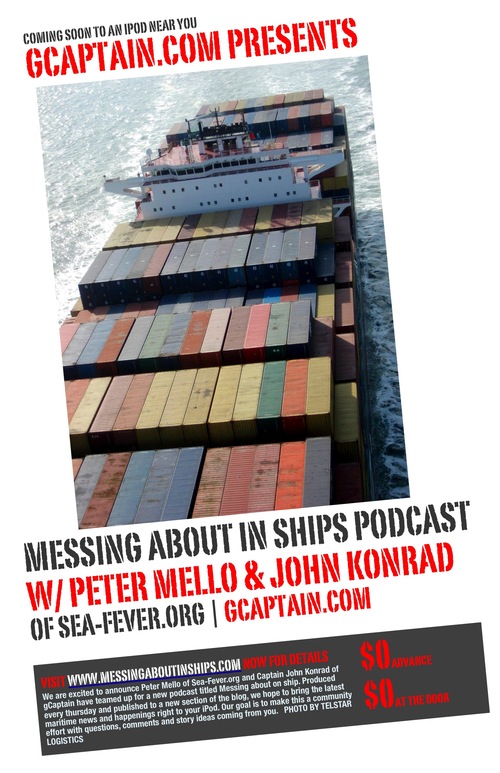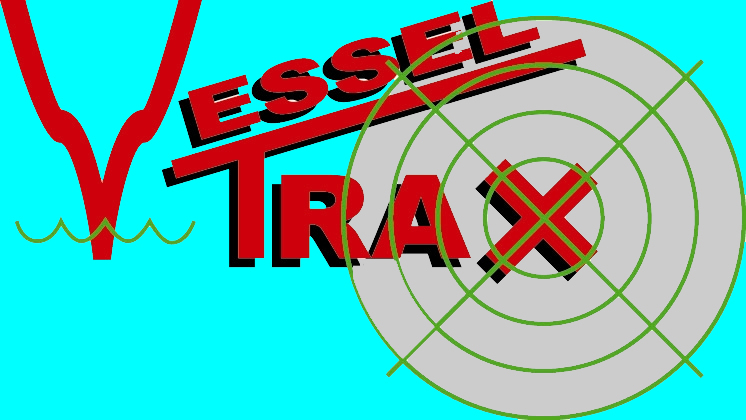 5 Most Dangerous U.S. Earthquake Hot Spots Beyond California
5 Most Dangerous U.S. Earthquake Hot Spots Beyond CaliforniaSome of these faults are capable of producing quakes bigger than the 1906 San Francisco quake, but because the time between major jolts is longer than in California, many people who live near these faults don't even know they are there.
Here's a closer look at five of the country's most hazardous seismic hot spots outside of California.
Map: USGS
A computer simulation of the 1700 Cascadia earthquake tsunami after 10 hours / USGS.
THE PACIFIC NORTHWEST:
The biggest earthquakes in the country are not in California. A much greater hazard, at least in terms of sheer magnitude, exists to the north of the San Andreas Fault where the ocean crust is being forced beneath the North American continent.
Known as the Cascadia Subduction Zone, this 680-mile long stretch of colliding land mass 50 miles offshore of Oregon, Washington state and southern British Columbia is capable of generating magnitude 9 earthquakes 30 times more powerful than the worst the San Andreas can dish out.
"There are lots of other earthquakes that may happen first, but they won't be as big," said marine geologist Chris Goldfinger of Oregon State University in Corvallis.
An earthquake of this size would completely devastate the region, which includes Portland, Seattle and Vancouver. There could be thousands of deaths and unprecedented damage for a quake in this country. Major travel routes will be impassable. The shaking could last a full four minutes, which would damage or bring down structures that could have survived a shorter duration.
On top of the danger from shaking, within minutes, a tsunami would likely inundate the low-lying coastal areas. Cascadia is the same type of fault that caused the 2004 Sumatra quake and tsunami.
Fortunately, these mega quakes only come around once every few hundred years. Unfortunately, the fault may be due for another big one any day now.
The last monster quake that ruptured the entire length of the Cascadia fault occurred in 1700 and was around a magnitude 9. It created a tsunami that crossed the entire Pacific Ocean and caused damage along parts of the Japanese coast.
Scientists had calculated an average time between these major quakes of around 530 years. But Goldfinger's recent research on marine landslides caused by earthquakes over the last 12,000 years has revealed many magnitude 8 earthquakes on the southern portion of the fault in the intervening years, bringing the average down to 270 years.
"It's been 308 since the last one so the probability is much higher," Goldfinger said. In fact, is new research on landslides puts the probability of a magnitude 8 or greater quake as high as 75 percent in the next 50 years.
Making matters worse, the region isn't prepared.
"Portland has lots of unreinforced masonry buildings" that are likely to collapse in a major quake, Goldfinger said. "The retrofitting has barely begun."
"It's going to be a mess."
Most of the major earthquakes in the world occur at tectonic plate boundaries where land masses are colliding or pushing past one another. But in the middle of the country lurks a geological enigma near New Madrid, Missouri, that has produced some of the largest quakes on record for the United States but has yet to be fully explained by scientists.
"It's a big mystery," said geologist Eugene Schweig of the U.S. Geological Survey, who has studied the area for 23 years. "New Madrid is about as far from a plate boundary as you can get."
In 1811 and 1812, a swarm of at least three massive earthquakes struck near New Madrid, the largest of which exceeded a magnitude 8 and caused violent, damaging shaking in an area 10 times larger than did the 1906 earthquake. The quake was felt over an area of two million square miles — nearly two-thirds of the country.
During the quakes, the ground rose and fell, trees were bent, deep cracks opened up in the ground, large landslides swept down hills, huge waves washed boats out of the Mississippi River and river banks, islands and sand bars gave way.
Damage was widespread, but only a few people died thanks to the sparse population in what was then the Louisiana Territory but today is near the junction of Missouri, Illinois, Kentucky, Tennessee and Arkansas. Were another magnitude 8 earthquake to strike the region today, the toll would be much, much higher.
By analyzing deposits of sand that squirted out of the ground during past major quakes, Schweig and others estimate an average time between earthquakes of 500 years. But earthquakes are impossible to predict, and because scientists aren't even sure why major quakes occur away from plate boundaries, it is even more difficult to estimate a probability for New Madrid.
The USGS's best estimate is that there is a seven to 10 percent chance of a major earthquake between magnitude 7.5 and 8 in the next 50 years. While the probability of a major quake on any given day in the New Madrid region is far less than that of the Bay Area in California, the potential for disaster if a quake does strike is greater due to the size of the area that could be violently shaken.
Another factor is the lack of awareness and preparedness in the area. It is nearly impossible to live in the San Francisco or Los Angeles areas without knowing there is an earthquake hazard. Small quakes remind residents of that every few months or weeks. But 1812 was a long time ago, so earthquakes aren't anywhere near the top of most people's concerns in New Madrid. And most buildings in the area haven't been retrofitted.
"We have buildings that have been sitting around for 200 years," Schweig said. "It's just bricks sitting on top of bricks. There are schools and police stations built like that."
Image: 1904 photo of trees bent during the 1811/1812 New Madrid earthquakes / USGS
SALT LAKE CITY:
The forces that have built Utah's incredibly scenic landscape are also the source of a very serious and potentially deadly seismic hazard. Running along the base of the western edge of the Rocky Mountains, the 240-mile Wasatch Fault lies underneath Salt Lake City and the state's urban corridor, home to 1.6 million people.
Though the Wasatch Fault has not delivered a major quake since the Mormon settlers arrived in 1847, geologists have found evidence that it is capable of unleashing jolts as big as magnitude 7.5. It is one of the world's longest "normal" faults, where the land on one side of the fault drops down relative to the other side during an earthquake. During prehistoric times, the fault slipped as much as 10 feet during a single quake.
"That's basically the process that formed the Wasatch Range," said geologist Chris DuRoss of the Utah Geological Survey. Over the last 17 million years, the fault has experienced almost seven miles of slip, raising the mountains above the adjacent valley floor.
The fault has distinct segments that act independently, each with its own history of earthquakes. On average, every 300 to 350 years, one of the central segments, which underlie the most populated areas including Salt Lake City and Provo, has had a major earthquake. The last big one was 300 years ago.
"We're basically due for an earthquake," said DuRoss, who has studied evidence of ancient quakes in trenches dug across the different segments of the fault. "We're really getting right into that zone when we'd expect to see one."
The prognosis gets even more grim with a closer look at the segment that underlies Salt Lake City and the segment just to the north. Both average a big quake every 1,300 years. The Salt Lake City segment last ruptured just about 1,300 years ago, and the last big quake to the north was around 2,100 years ago.
The danger from a major earthquake is heightened in the Salt Lake Valley because it sits atop an ancient lake bed made of softer sediments that tend to amplify seismic waves. This is bad news for an area that has around 185,000 vulnerable buildings made of unreinforced masonry that isn't built to survive an earthquake. Most of these are homes, but some are schools and other public buildings.
Video: Utah Geological Survey
The Seward highway in Alaska after the 1964 earthquake / USGS
ALASKA:
The second-largest earthquake ever recorded struck Alaska's Prince William Sound in 1964. The magnitude 9.2 quake killed 128 people, most by the resulting tsunami.
In some places, the ground was uplifted almost 38 feet, and in others it dropped more than seven feet. The tsunami reached heights of around 220 feet locally, and killed 11 people 1,650 miles away in Crescent City, California.
The "mega-thrust" quake was the product of the collision of two tectonic plates, the oceanic plate being forced beneath the continental plate. Those plates are still moving and accumulating stress that will eventually be released in another big quake. The geologic record shows gaps of 350 to 900 years between monster quakes, which would seem to put the Alaskan coast in the clear.
But there could be several smaller magnitude 8 quakes filling those gaps that aren't quite big enough to show up in the geologic record, said geologist Peter Haeussler of the U.S. Geological Survey in Anchorage. "There's enough question that we just really don't know."
And Alaska has plenty of other sources of earthquakes to contend with. The oceanic plate bends and sinks as it is pushed beneath the continent, which can cause quakes potentially up to magnitude 7. And there are plenty of active faults on dry land as well.
"The big Kahuna for Alaska is the Denali Fault," Haeussler said, which had a 30-mile-long rupture in a magnitude 7.9 earthquake in 2004.
Alaska's biggest vulnerability is its transportation infrastructure. Virtually everything and everyone that goes anywhere in the state passes through Anchorage. The airport sits on ground that could suffer liquefaction — where sediments behave like a liquid when shaken in an earthquake — that could seriously damage runways and isolate the rest of the state.
Hawaii is well known for its volcanic hazard, but the islands are also susceptible to major earthquakes such as a magnitude 7.9 quake in 1868 that killed 77 people. Evidence of prehistoric quakes is hard to come by in Hawaii, making it especially difficult to guess when the next big one will strike.
The Hawaiian Island chain was formed by a massive plume of extra-hot magma rising through the molten mantle between Earth's crust and core. The plume forced its way through the ocean crust, creating a volcano. As the Pacific plate slowly moved over the stationary plume, new volcanic islands were formed as older ones went dormant — the Big Island is where the magma is currently breaking through.
"All our earthquakes are ultimately associated with the processes that form the volcanoes," said earthquake seismologist Cecily Wolfe at the University of Hawaii at Manoa.
Loading the ocean crust with massive volcanoes — the from ocean floor to peak, the Big Island is the tallest feature on — causes it to flex, which can produce earthquakes. Even more dangerous are the quakes caused by the expansion of the volcano as new magma pushes out from below. These jolts can be very large and cause destructive tsunamis as well. More than half of the people killed by the 1868 died in the ensuing tsunami.
With only the historical earthquake record to go by, scientists have little data to help them estimate the probability of another big quake in the future. The most recent giant quake was a magnitude 7.2 in 1975, 107 years after the previous one. Does this mean Hawaii can relax for another 70 years or so? It's impossible to say. And since 1868, there have been seven quakes of magnitude 6.2 or greater, most recently a 6.7 in 2006 that caused $250 million in damage.
Hawaii is fortunate that most of its biggest earthquakes occur on the relatively sparsely populated Big Island. And the most active part of the Big Island is the south flank, which would send a tsunami out to sea instead of toward the other islands. But big ones that do sometimes strike the west flank of the island could send a tsunami to the much more populated shores of Maui and Oahu.
"I'm sure that many people are completely unaware of the local tsunami hazard on the other islands," Wolfe said.
In the past, some of the earthquakes caused by the flexing of the crust under the weight of the islands have struck near Maui, including a magnitude 6.8 in 1938. And Hawaii has plenty of older buildings that won't survive major shaking, particularly many homes that are not bolted down to a solid foundation.
"Those buildings can literally walk off their blocks during an earthquake," Wolfe said.
WEATHER NOTE
A study of data from the National Hurricane Center shows an increase in activity.
"If the future is like the past, we probably have another ten, 15 or 20 years left in this active period," says Colorado State University atmospheric science professor Bill Gray.
Gray says the increase in activity is the result of changes in currents in the Atlantic Ocean. He believes variations in the ocean's salinity are leading to more favorable conditions for tropical development.
"There's been too much said and too many people trying to jump in and say it's human-induced global warming," Gray adds.
Other scientists disagree. The Union of Concerned Scientists' Brenda Ekwurzel acknowledges that natural factors play a role, but she says human activity has increased the temperature of the oceans, and warmer oceans can produce more tropical systems.
"We're looking at lots and lots of tropical storms," Ekwurzel says. "When one does turn into a hurricane, it's more likely to be a very, very intense storm."
Numbers from the National Hurricane Center show 207 named storms in the Atlantic since 1995. That figure represents a 68 percent increase from the previous 13 years. The data also show a 75 percent increase in hurricanes over the same period.
MARITIME NOTE
All hands on deck in simulated oil spill exercise

Photo: Darrin Zammit Lupi.
Mariners looked on curiously as the police and armed forces yesterday showed off their speedboats while ships congregated some miles off Valletta to take part in an oil recovery response exercise.
The exercise, organised by the Malta Maritime Authority and European Maritime Safety Agency, simulated the detection of a heavy oil slick off Valletta, "reported" by a fishing boat to the authority's Vessel Traffic Services (VTS).
The first call was made to the Harbour Master at 5.30 a.m. and the response was initiated through VTS calls to everyone concerned. The authority's Control Centre was fully manned by 6 a.m.
Meanwhile, vessels arrived on the scene to deploy oil-retaining booms and skimming equipment to recover the slick.
Weather conditions were favourable as the MT Santa Maria swept and skimmed the oil off the surface, in coordination with vessels from the agency's pollution response network.
When an EU member calls for help, these vessels can be deployed to help in the clean-up and response operations.
Harbour Master Capt. Richard Gabriele explained that although the exercise is a simulated one, the conditions were very real.
"The response has to be timely and coordinated and everyone has to strictly abide by the instructions," he said.
Commenting on the outcome of the exercise, Capt. Gabriele said he was confident the situation would be tackled successfully in the event of a real spill.
These recovery exercises are held every year by the authority and relevant stakeholders to sharpen the island's capabilities to deal with various types of oil pollution.
From the blog: UP Ibalon Bicol
A Sorry Maritime Safety Record Indeed In The Philippines
Few question that currently Sulpicio Lines holds the most notoriety among local shipping companies. But as I have pointed out in a previous article ["The Blame Game and Other Musing", 7/13/08] the combined WG&A is not too far behind Sulpicio, going by actual statistics.
Maybe due to the sheer number of incidents, a few of these gets left out. Or we may not be too meticulous in keeping records (the Maritime Industry Authority [MARINA] doesn't even have its ship database in order). Or far-flung incidents sometimes does not catch the attention of them national media (except when casualties are simply too many).
Few would remember that in May 1980, the Sulpicio ship MV Dona Paulina struck bottom. The same thing happened to Don Victoriano I in April 1982. Both ships were declared total losses. These two incidents happened before the infamous Dona Paz and Dona Marilyn accidents in 1987 and 1988 (see Totie Mesia's article, "RP's Maritime Disasters: A Harvest of Shame and Blame", 11/08/08). Aside from these, Sulpicio Lines' ships were also involved in minor incidents like grounding, collision, ship fire and engine breakdowns that did not involve loss of life or the total loss of the ship.
Maybe to break its string of "bad luck" (the local euphemism for loser's fate), Sulpicio Lines changed the name of their ships into Princesses. For a while it probably broke Sulpicio's jinx but on December 1997, it lost MV Philippine Princess (a former flagship) to fire and subsequent sinking followed by the sinking of the MV Princess of the Orient (another former flagship) in September 1998. Finally, "bad luck" caught up with a reigning flagship, the MV Princess of the Stars, which capsized recently.
In the same period, some other obscure incidents happened to ships not connected to Sulpicio. In the early '90s the following ships were lost:
1. MV Emerald which capsized according to MARINA records.
2. MV Ruby I of Alexis Shipping: a RO-RO that sunk just off the port of Calapan due to a holed bottom.
3. A SuperCat (a catamaran) of Aboitiz was lost due to another holed bottom between Mindoro and Batangas.
4 . MV Manila City of William Lines: a Manila-Cebu ship that caught fire while under drydock in Cebu City and was totally lost.
From the mid-'90s and 2000, the following ships were lost to fire:
1. MV Viva Antipolo 7 which caught fire in 1995 according to MARINA records. This ship was totally lost.
2. MV Gretchen which caught fire in 1996 according to MARINA records.
3. MV Kalibo Star of Maypalad Shipping which caught fire in 1997.
4. MV SuperFerry 7 of WG&A: caught fire on March 1997 just after unloading passengers in North Harbor, Manila and was lost.
5. MV Rosalia II of Lapu-lapu Shipping: a Cebu-Cataingan ferry that caught fire a few kilometers before Cataingan port, on August 1999. Three passengers were killed.
6. MV SuperFerry 6 of WG&A: caught fire on October 2000 just off Batangas and was lost. Its nearness to major sea lanes and ports assured the survival of all the passengers.
In this decade, the following steel ferries of minor shipping lines met major accidents. The details of these incidents are not complete:
1. MV Penafrancia which caught fire according to MARINA records.
2. MV Ruperto Jr. of Tamula Shipping: a Camiguin ferry which caught fire.
3. A Super Shuttle Ferry ship of Asian Marine Transport capsized.
4. MV Joy-Ruby of Atienza Shipping: sunk just off the port of Coron, Palawan.
5. MV Pulauan Ferry of George&Peter Lines: a Siquijor ferry that sunk off Cebu City.
Additionally, the following major incidents happened in the last 6 years:
1. MV Princess Camille of Shipshape Shipping: took in water while unloading passengers in Odiongan, Romblon and capsized.
2. MB Mae-Ann 5 of Lobrigo Shipping: overwhelmed by waves off Masbate City on May 12, 2005 while Typhoon Caloy was blowing. 27 people died.
3. MV Princess of the World of Sulpicio Lines: caught fire off Zamboanga del Norte coast on July 2005 and was totally burned.
4. MV Dona Ramona of Basilan Shipping: a bomb exploded while docked in Lamitan, Basilan, on August 8, 2005. Three died.
5. MV Butuan Bay of Gothong Shipping: its engine exploded just after leaving Cebu City on May 16, 2007. Three crewmen died.
6. MV Blue Water Princess of Blue Water Princess Shipping: bad weather and strong waves caused it to capsized off Bondoc Peninsula, Quezon on July 12, 2007 where 12 persons died.
7. MV Northern Samar of Bicolandia Shipping capsized in the height of a typhoon while docked in Tabaco port. Big waves moved the ship against a rock and the bottom was holed.
Additionally, an explosion and a fire happened on August 2002 while MV Tacloban Princess of Sulpicio Lines was drydocked. Two people were killed.
These 22 major incidents are separate from those mentioned in Totie Mesia's article. Proving that marine safety is indeed poor in this country.
Have a super weekend!
RS







































































































![Validate my RSS feed [Valid RSS]](valid-rss.png)